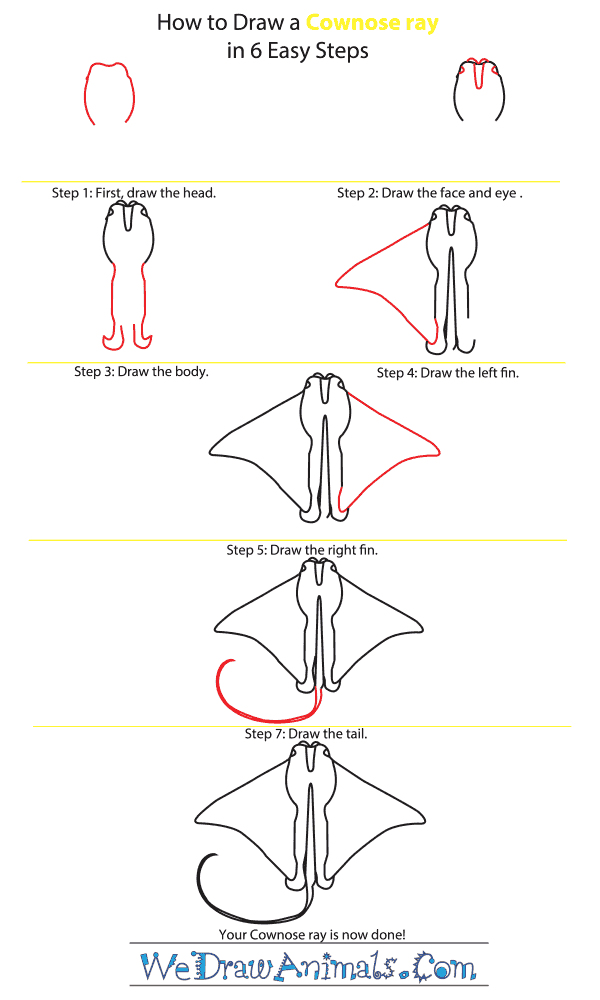In this quick tutorial you'll learn how to draw a Cownose Ray in 6 easy steps - great for kids and novice artists.
The images above represent how your finished drawing is going to look and the steps involved.
Below are the individual steps - you can click on each one for a High Resolution printable PDF version.
At the bottom you can read some interesting facts about the Cownose Ray.
Make sure you also check out any of the hundreds of drawing tutorials grouped by category.
How to Draw a Cownose Ray - Step-by-Step Tutorial
Step 1: First, draw an oval open on the bottom and with an m shape on top to make the head.
Step 2: Draw a shape that looks like a carrot at the middle top of the head. Add two half circles on the sides for eyes.
Step 3: Finish the body by drawing two straight lines down and two hook shapes pointing out at the bottom.
Step 4: Draw a triangle for the left fin.
Step 5: Draw the right fin the same way, just facing the opposite direction.
Step 6: Give your ray a long skinny tail that curls around to the side. You're done with your cownose ray! These rays are gray on top and have light bellies if you want to color your picture.
Interesting Facts about the COWNOSE RAY
The Cownose Ray is a member of the fish family and the scientific term for them is Rhinoptera bonasus. These animals live in most parts of the Atlantic Ocean. This species has a Near Threatened status. They’ve a brown back, a white or yellow belly, and a body that has a diamond shape. Their head is wide with eyes set far apart, and a couple of hard surfaces in their mouth that are designed for crushing clams or oysters.
Did you know?
- Their babies can be almost 2 feet wide.
- There is an average adult width of 2.5 feet.
- They can reach a size of up to 7 feet wide.
- Their average weight is 21 pounds.
- The species may weigh more than 50 pounds.
- There are females who reach 30% more mass than males.
Their flapping method of swimming uncovers animals that are buried in the sand, and they use a suctioning technique for drawing the food into its mouth. The young are born live, and exit with the tail first. They all have a tail that can be used to sting their enemies. The venomous tip of the tail is removed when domesticated.







